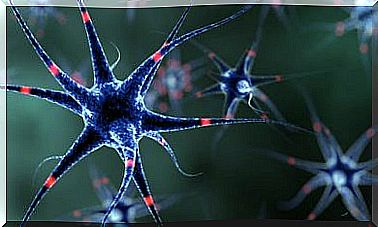Hydromorphone: Uses And Side Effects
Hydromorphone is a drug similar to morphine in terms of analgesic efficacy and side effects. Find out more in this article.

Hydromorphone is an analgesic drug semisynthetically derived from morphine which exhibits 5 times more potency, although its action is short.
Even if we will see it later, it owes its analgesic action to the interaction with the µ opioid receptors. The latter are found in the central nervous system as well as in smooth muscle.
Hydromorphone can be administered both enterally and parenterally. Binding with µ receptors is the cause of analgesic effects as well as adverse reactions.
In addition, opioid analgesics represent one of the main pillars that constitute the pharmacological range for the treatment of moderate to severe pain. Especially in the case of acute pain and pain derived from oncological disease.
In the treatment of acute pain, clinical trials have shown that this drug offers analgesic equivalence similar to that of other opioids.
As for the treatment of oncological pain, it has been tested against other opioids and with different formulations. It is therefore a drug similar to morphine in terms of analgesic efficacy and side effects.
Finally, in the treatment of chronic non-cancer pain, there are as yet no controlled clinical trials that provide scientific evidence for the efficacy of hydromorphone use in these patients.
A little history around the hydromorphone

Hydromorphone, as we have seen, is a semi-synthetic derivative of morphine. It was synthesized in Germany in 1921. In addition, the first results on the clinical efficacy of hydromorphone were published in 1926.
However, it was not until 1981 that the pharmacokinetics and pharmacodynamics of this molecule were studied in various studies.
It is a drug marketed under different brands and in different dosage forms with different strengths.
How does hydromorphone work in the body?
Hydromorphone is a potent µ-opioid receptor agonist. These receptors, like other types of opiate receptors, are coupled to G proteins and act as modulators, both positive and negative, of the synaptic transmission that takes place through this protein.
This drug does not change the pain threshold of nerve endings. It also does not affect the transmission of impulses along peripheral nerves.
On the other hand, the analgesia it causes is due to the changes it causes in the perception of pain in the spine. Like other opiates, hydromorphone has a very high analgesic cap.
Adverse effects of hydromorphone

Hydromorphone, like other drugs on the market, also contains a number of adverse effects.
By side effects we mean all those that are unwanted and unintended and possible in treatment with this medicine.
In this sense, among the most common side effects observed in patients treated with this analgesic, we can mention the following:
- Nausea
- Vomiting
- Constipation
- Drowsiness
- Euphoria
- Dry mouth
- Fear of heights
Regarding the severe side effects associated with hydromorphone, this includes respiratory depression and apnea, as well as circulatory depression, respiratory arrest, shock as well as cardiac arrest.
Conclusion
Although hydromorphone exhibits a pharmacologic, analgesic profile, and some morphine-like side effects, there remains a controversy regarding the equianalgesic doses between these two drugs and between oral and parenteral doses.
Nowadays, few studies have published data on the quality of the role of hydromorphone in the treatment of chronic pain resulting from oncologic disease. Therefore, it is necessary to perform more detailed research in this area. In addition, clinical trials should be performed to study the use of hydromorphone in this type of patient.








